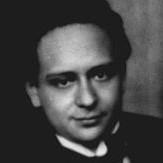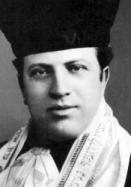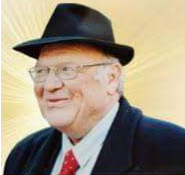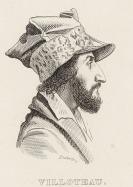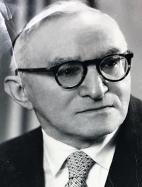(1343 results found)
Viktor Ullmann
… Ullmann family moved to Vienna, and Viktor began studying music theory with Dr. Josef Pohlaneur. In 1918, Viktor … order to run the anthroposophical bookstore Novalisin Stuttgart. In 1933, Ullmann returned to Prague and his life as a … in Prague. Beginning in 1935, Ullmann began studying quarter-tone composition under the guidance of Czech composer …

Esther R. Warkov
… Esther Warkov's seminal contributions to the study of Arab music and Arab-Jewish musicians in Iraq and Israel feature … Welsh Music submitted to the University of Wales Department of Music, University College, Cardiff. Her work with … Simon Shaheen. Warkov originally planned to write about the art of instrumental improvisation in Arab music. However, …
Hirsch Weintraub
… He was the son of cantor-composer Solomon Weintraub , and started his musical training at an early age singing as a chorister in … choir in Dubno, and also receiving formal studies of music and violin. Later he left to study harmony in Vienna …

Albert Weisser
… was drafted into the U.S. Army, and later earned a Purple Heart for wounds received during the Normandy invasion. While … Upon graduating in 1948, he entered the master's program in musicology. Under the guidance of Curt Sachs , he wrote his thesis on 'The Jewish National Music in Russia', which was later published as The Modern …
Efraim Yaakov
… in Yemen. He completed his academic degrees in the Department of History and Philosophy at the Hebrew University, … and especially recruited people on the subject of the music of the Jews of southern Yemen ... '. Sources (in …
Mordechai Yardeni (Motl Sherman)
… yeshiva Mishkan Israel. Later he enrolled in The School of Music and Drama. As a writer, Sherman made his debut writing … newspaper ' Yiddishe Welt' began to publish his musical and theatrical reviews. In February 1930, at the … of Leo Liov (Leo). He also published collections of articles: Interviews mit Yiddish Schreiber (Interviews of …
Akiva Zimmermann
… expert in the field of hazzanut . He published articles in this field on a variety of platforms, issues, … beings. He knew many of Israel's leaders personally, particularly regarding their relationship to Jewish tradition … articles on a variety of topics - from hazzanut and Jewish music to current affairs in politics and society. He also …
Guillaume André Villoteau
… Guillaume André Villoteau was a French Musicologist. He was particularly interested in Arabic music, and specially in Egyptian music. Full biography at …
Meir Shimon Geshuri
… - December 9, 1977) was an Israeli researcher of Jewish music with emphasis on the study of Hassidic music … in the Hapoel Hamizrachi movement, a religious socialist party within the Zionist movement. A thorough evaluation of … of Jewish music. Born in Myslowitz, Upper Silesia, then part of the German Empire (now Mysłowice, Poland), Geshuri (a …

Martin Ruhnke
… Martin Ruhnke was a German musicologist. His main areas of research were the music theory of early baroque music, Italian baroque opera … … German musicologist … Musicologist … Baroque … Germany … Martin Ruhnke …



